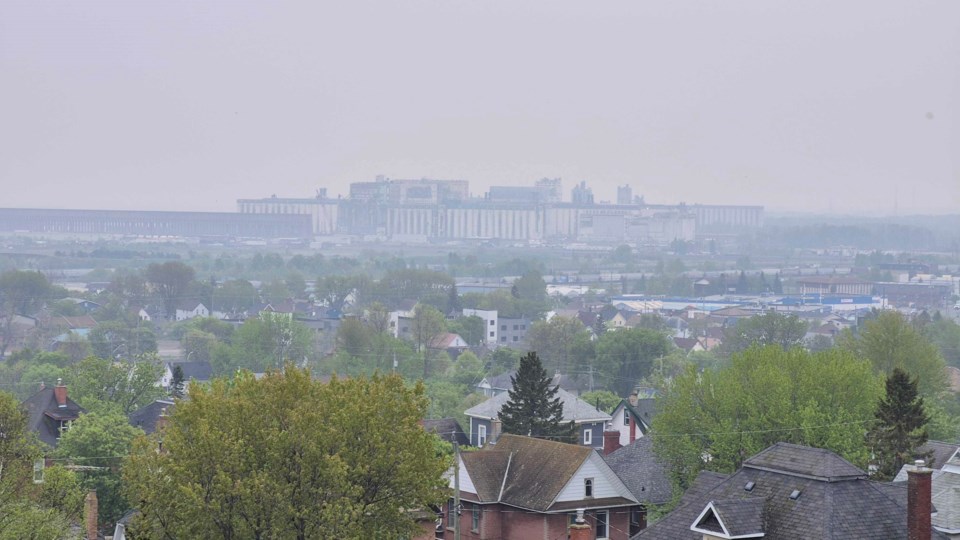THUNDER BAY — There are no air quality monitoring stations between Thunder Bay and Winnipeg, but a number of commercially-available sensors are helping to fill in the picture on air quality in the region.
Multiple levels of government and other organizations have partnered up to promote the installation of the relatively inexpensive air quality sensors nation-wide, helping to make data and forecasting more detailed.
The initiative is a partnership between Environment and Climate Change Canada, Health Canada, provincial environment ministries and other local authorities. Keith Jones, the head of the air quality science unit at the Meteorological Service of Canada, said a recently-completed five-year pilot project saw the installation of about 450 additional sensors across Canada that specifically measure fine particulate matter — the name for a range of tiny particles found in many types of air pollution, including forest fire smoke.
It is dangerous to human health because it travels deep into the lungs, causing a host of health problems.
“These sensors can be purchased by anybody — individuals or government agencies, local authorities,” Jones said. “A lot of these sensors are just out there, purchased by other individuals, and the data is available to be viewed as well.”
An interactive map was developed in partnership with the University of Northern British Columbia, Jones said, where people can check the readings of each individual sensor that is registered with the program.
This network is intended to help expand the amount of information available about fine particulate matter across the country, leading to more detailed data collection and forecasting used to inform the issuing of air quality alerts, Jones said.
These sensors compliment the network of larger air quality health index (AQHI) observation stations in place. The Thunder Bay station at Mini-Queen’s Park — the provincial government building on James Street — is the most westerly one in Ontario.
However, according to the air quality interactive map, these smaller sensors have been deployed in communities like Kenora, Dryden, Sioux Lookout, Nestor Falls, Terrace Bay and Manitouwadge, and further north in First Nations like Pikangikum, Sandy Lake, Neskantaga, Webequie and Peawanuck.
“Ontario has been collaborating with (Environment and Climate Change Canada) and Health Canada to deploy low-cost air quality sensors across northern Ontario to enhance and supplement (fine particulate matter) measurements to support and inform air quality forecasting,” Gary Wheeler, a spokesperson for Ontario’s Ministry of Environment, Conservation and Parks, said in an email to Newswatch.
Wheeler added that a wide range of information sources, in addition to the AQHI stations, is used in situations like when wildfire smoke becomes a problem — even in areas where the large stations aren’t present. That includes these fine particulate matter sensors.
“Air monitoring data from the closest AQHI air monitoring station — such as Thunder Bay — as well as data from non-regulatory air pollution sensors, meteorological models, meteorological observations, satellite-derived data and wildfire smoke models are used to forecast air quality and inform the issuance of air quality alerts,” Wheeler said.
Jones agreed.
“While ground observations are useful for enhancing situational awareness and validating model output in real time, they're not necessary to generate these air quality statements and air quality warnings,” he said.
The sensors range in price “in the hundreds to the thousands of dollars,” Jones said. Once purchased, the owner registers the device and has a choice whether to make its information public. If they do, the sensor’s information is transmitted to the interactive map.
“We've partnered with various agencies in Ontario,” Jones said, adding that includes the Ministry of Environment, Conservation and Parks and the Ministry of Transportation.
“Health Canada — our federal partners — have assisted as well in getting entered into some of the provincial health units in different areas of the province,” he said.
“It's been a collaborative effort.”
